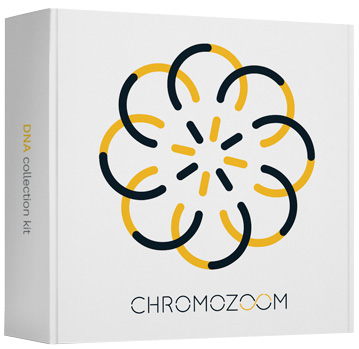Acne and its development
Acne vulgaris, or simply acne, is a chronic inflammatory disease affecting nearly 10% of the world's population regardless of origin, gender, or age. Virtually 100% of individuals are affected by some form of acne during their life. Acne is one of the most frequently diagnosed dermatological problems that differ in the degree of severity. The most marked appearance of acne is the formation of inflammatory pimples in areas with a high follicle content (i.e. on the face, back, and shoulders). In many cases, acne leads to scarring and the development of post-inflammatory hyperpigmentation spots.
Acne affects the quality of life as well may have psychological consequences (from reduced self-confidence to depression). Therefore, it is important to begin treatment at an early stage of the disease in an effort to prevent its development to the chronic phase. Most people are affected during their adolescence, but in many cases, acne can persist into adulthood. Based on the research, black and Hispanic populations more affected by acne compared to Caucasian and Asian populations.
Several mutually influencing factors are involved in the development of acne:• Excessive production of sebum
• Clogged sebaceous gland ducts (secreting oily matter)
• Increased occurrence of Propionibacterium acnes bacterium (which metabolises carbohydrates) on the skin
• Inflammatory response
Acne is a disease and its development is affected by a number of factors. In addition to the above-mentioned risk factors, the development and symptoms of acne are influenced by genetic predispositions and external factors including UV radiation, smoking, and lifestyle.
One of the key factors in the development of acne is the excessive production of sebum caused by hormonal changes. For this reason, acne most frequently affects adolescents. In adulthood, females are particularly affected by hormonal changes (i.e. menstrual cycle, pregnancy, menopause).
Sebum
The sebum is an oily body fluid (containing triglycerides, fatty acids, cholesterol, etc.) secreted by the sebaceous glands. Sebum ensures the elasticity of the skin and hair. The production of sebum is regulated, in particular, by androgens and estrogens.Significantly elevated androgen levels (mainly testosterone in the blood or dihydrotestosterone in the skin) cause the development of acne. The effects of androgens in the sebaceous glands are dependent on androgenic receptors located on the surface of keratinocytes (epidermal cell producing keratin) and in the sebaceous glands. Androgens (predominantly dihydrotestosterone) stimulate the production of sebum.
In contrast, estrogens suppress the function of the sebaceous glands and decrease the androgen effects. Therefore, an improvement in the condition of the skin in females is seen during periods of higher levels of estrogen (pregnancy, ovulation, contraception use, etc.).
In addition to hormonal effects, the genetically conditioned increased sensitivity of the androgenic receptors in the sebaceous glands (secretes oily matter) and the activity of the 5-alpha-reductase enzyme, which converts the testosterone hormone to dihydrotestosterone, may also affect the development of acne. With advancing age, the sensitivity of receptors as well the enzyme activity of 5-alpha-reductase declines, and hence the risk of developing acne also decreases.
Propionibacterium acnes bacterium
The increased production of sebum and its accumulation in the hair follicles (small secretory glands) may lead to an imbalance in the microflora (various microorganisms that naturally occur on the skin) of the skin and excessive colonization by Propionibacterium acnes bacterium, which is part of the physiological flora of the skin.In skin affected by acne, these organisms multiply in the hair follicles of the sebaceous glands much faster and produce an increased amount of substances that affect the condition of the skin. One of these substances is lipase, which splits lipids (triglycerides) of sebum into fatty acids.
Fatty acids subsequently induce the formation of comedones and the development of inflammation in the dermis (layer of tissue below the epidermis). In more severe forms of acne, disorders of cellular immunity and the rise of antibodies against bacteria occur together with the development of hypersensitivity.
Follicular hyperkeratosis
Follicular hyperkeratosis is the excessive production of keratin in hair follicles which leads to clogged follicles. This abnormal production of keratin is caused by increased production of skin cells (keratinocytes). The stimulation of keratinocytes along with the excessive production of sebum is caused by elevated levels of androgens (i.e. male sex hormones).Accumulated sebum in the follicle attaches to dead skin cells and thus reduces desquamation (exfoliation of the skin). These cells then lead to the formation of "clogs" closing the sebaceous gland ducts (which secrete oily matter). Sebum (oily secretion) then accumulates and forms acne spots.
Acne treatment
The first step in treating acne is to determine the severity of the disease and to take an individual approach with a properly chosen type of treatment. The best time to begin treatment is at the sign of the first symptoms. By doing this, the development of more severe forms of acne and possible scarring is prevented. In the treatment of acne, topically applied preparations containing active substances (retinoids, topical antibiotics, azealic acid, etc.) are most often used.For more severe forms of acne, systemic treatment is combined with oral treatment (antibiotic administration, hormonal therapy, corticosteroids, etc.) along with topical treatments (applied directly to the skin). The last options are corrective dermatological approaches (e.g. deep cleansing, chemical peeling, laser procedures, etc.). The reduction and elimination of factors that may adversely affect the development and course of this disease are also very important.
